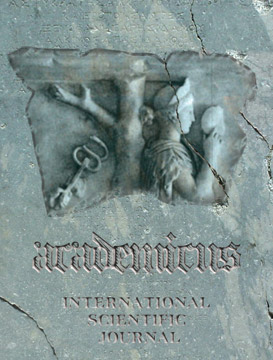Title:
When the Cave Becomes Home
Full Reference List:
| 1. | Adler, A. (1974). Praxis und Theorie der Individualpsychologie (1930). Fischer, Frankfurt. (APA) |
| 2. | Asada, M. (2015). Development of artificial empathy. Neuroscience research, 90, 41-50. |
| 3. | Belk, R. (2022). Artificial emotions and love and sex doll service workers. Journal of Service Research, 25(4), 521-536. |
| 4. | Bridle, J. (2018). New dark age: Technology and the end of the future. Verso Books. |
| 5. | Dahmani, L., & Bohbot, V. D. (2020). Habitual use of GPS negatively impacts spatial memory during self-guided navigation. Scientific reports, 10(1), 6310. |
| 6. | Donovan, N. J., & Blazer, D. (2020). Social isolation and loneliness in older adults: review and commentary of a national academies report. The American Journal of Geriatric Psychiatry, 28(12), 1233-1244. |
| 7. | Kirby, M. (2021). Pornography and its impact on the sexual health of men. Trends in Urology & Men’s Health, 12(2), 6-10. |
| 8. | Maguire, E. A., Gadian, D. G., Johnsrude, I. S., Good, C. D., Ashburner, J., Frackowiak, R. S., & Frith, C. D. (2000). Navigation-related structural change in the hippocampi of taxi drivers. Proceedings of the National Academy of Sciences, 97(8), 4398-4403. |
| 9. | Nasrallah, H. A. (2023). Is the contemporary mental health crisis among youth due to DMN disruption? Current Psychiatry, 22(6). |
| 10. | Norretranders, T. (1999). The user illusion: Cutting consciousness down to size. Penguin. |
| 11. | Bailenson, J. N. (2021). How video conferencing technology reshapes face-to-face communication: A review. Current Directions in Psychological Science, 30(4), 322-327. https://doi.org/10.1177/09637214211009300. |
| 12. | Borotschnig, Hermann. (2024). Emotions in Artificial Intelligence. |
| 13. | Burr, C., Cristianini, N., & Ladyman, J. (2020). Emotions and Digital Well-Being: On Social Media’s Emotional Affordances. Philosophy & Technology, 33, 193–214. https://doi.org/10.1007/s13347-020-00400-1. |
| 14. | Massey, C., & Others. (2024). Co-Intelligence: How to Live and Work with AI. Journal of Organizational Behavior. https://doi.org/10.1007/s10869-024-09709-9. |
| 15. | Reinecke, L., Meier, A., Beutel, M. E., Schemer, C., Stark, B., & Wölfling, K. (2021). Digital Emotion Regulation: Multitasking, Online Media, and Affective Well-Being. Communication Research, 48(2), 207-235. https://doi.org/10.1177/00936502211052474. |
| 16. | Byrne, Ciara. (2019, Feb 11.) Can talking to robots combat a growing mental health crisis? https://www.fastcompany.com/90299135/mental-health-crisis-robots-chatbots-listeners |
| 17. | Duhigg, C. (2019, July 15). The real roots of American rage. The Atlantic. https://www.theatlantic.com/magazine/archive/2019/01/charles-duhigg-american-anger/576424/ |
| 18. | Guardian News and Media. (2023, March 16). The stupidity of ai. The Guardian. https://www.theguardian.com/technology/2023/mar/16/the-stupidity-of-ai-artificial-intelligence-dall-e-chatgpt |
| 19. | Klein, J. (2022, May 6). Why people behave badly on dating apps. BBC News. https://www.bbc.com/worklife/article/20220505-why-people-behave-badly-on-dating-apps |
| 20. | Online dating application market size & share report, 2030. Online Dating Application Market Size & Share Report, 2030. (n.d.). https://www.grandviewresearch.com/industry-analysis/online-dating-application-market-report |
| 21. | Sardis, B. (2023, November 13). Companion robots for seniors. Vibrant Aging Insider. https://vibrantaginginsider.com/technology/companion-robots-for-seniors/ |
| 22. | Stanley, Michael. Opinion | what it means to be alive - The Washington Post. https://www.washingtonpost.com/opinions/2024/01/05/what-it-means-be-alive |
Back to article
Academicus
International Scientific Journal
pISSN 2079-3715
eISSN 2309-1088
Address:
Sheshi i Flamurit, Rruga Muze
Al-9401 Vlorë, Albania
Tel: +355 68 60 60 555
info@academicus.edu.al
https://academicus.edu.al


